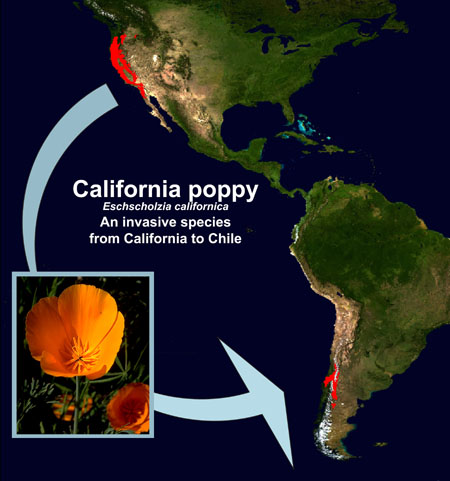|
WHAT IS THE FUTURE DISTRIBUTION OF A NEWLY INVASIVE SPECIES?
Even a species as lovely and apparently benign as the California poppy, Eschscholzia californica, can become an invasive species outside of its native range. Here, we predict the potential distribution of E. californica in South America. Coastal Chile shares a similar ‘Mediterranean’ climate regime with California, so it’s not surprising that ecological modeling predicts suitable poppy habitat in Chile. In the historical past, California poppies have been repeatedly introduced to Chile, where they have spread to cover huge areas, supplanting native flora. In Chile, the poppy turns out to be larger and more reproductively successful than in its native locations – perhaps because of a lack of natural predators.
The poppy habitat model is based on 100 E. californica collection localities associated with museum specimens in the Oregon State University Herbarium and the Jepson Herbarium at U.C. Berkeley. To generate the model, we used Bioclim inside DIVA-GIS freeware with climatic variables obtained from the WORLDCLIM website.
Invasive species are one of the top three culprits behind disappearing biodiversity. Mapping specimens from natural history collections can be a valuable tool for managing the problem of invasive species.
|
 |
why map biodiversity? |
 |
|

